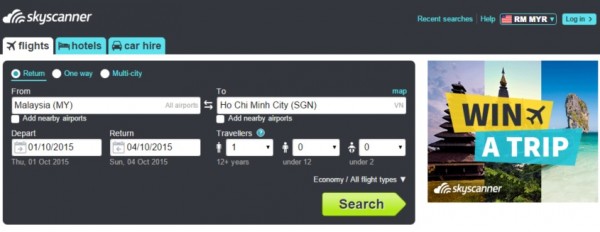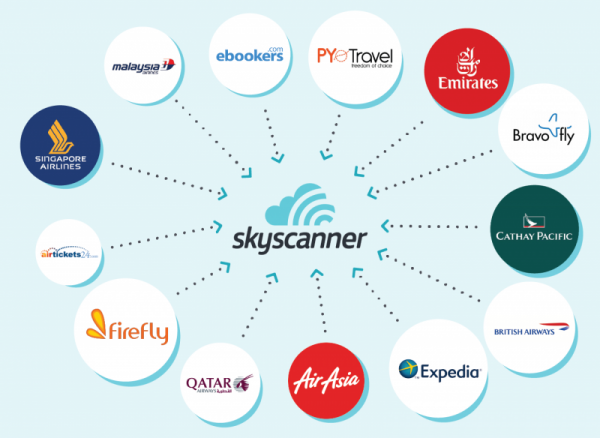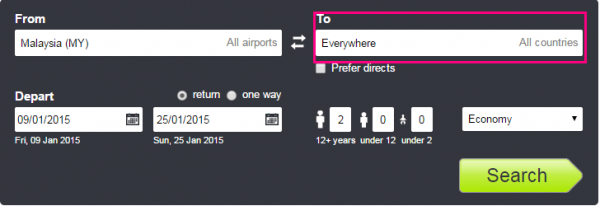For seasoned travellers, knowing where to find the best deals on flights and accommodation can make all the difference. The budget conscious always seem to know where to find exceptionally good deals, allowing them to stretch their Ringgit. Their biggest secret is perhaps the fact that finding a good deal isn’t actually that difficult.
Skyscanner isn’t a new offering, the travel search engine has been around since way back in 2003 – its founding story is itself an interesting one. As always, there was a problem that needed solving. Frustrated by the difficulties of finding cheap flights to ski resorts, the three co-founders created a search engine dedicated to finding the best airline deals available online. Because the three were British, the initial Skyscanner engine only searched for European budget airlines, before eventually scaling up to cover most major airlines.
Today, Skyscanner has offices in Edinburgh, Glasgow, Barcelona, Budapest, Sofia, Beijing, Shenzhen, Miami and Singapore, where the latter is the Asia Pacific headquarters. From the three back in 2003, there are over 700 employees globally, and the company is now valued at over £1 billion.
What’s interesting about Skyscanner is in its marketing – or more accurately the lack of it. Skyscanner is exceptionally proud of the fact that its popularity stemmed purely from word of mouth – the company has does not run any ads. More importantly, it is completely free to use – you have the option of registering an account on Skyscanner, but there is no need to.
The search engine was built to be light and works exceptionally well on its mobile app, where development is focused first since its release in 2011. This is a company approach that proved very successful, as it seamlessly integrated itself into the global transition of the mobile-first consumer.
https://www.youtube.com/watch?v=zqQMLevfSis&feature=youtu.be
Like any other search engine, Skyscanner only needs your desired destination and expected flight dates. And unlike Google, we’re told that Skyscanner’s search results are “pure” – it is not affected by clients’ advertising revenues whatsoever. The company also does not charge users to use the site, nor does it receive commissions when the user books a flight or a hotel room using Skyscanner; like Google, when a user clicks on a search result they are directed straight to the airline’s website. This makes Skyscanner markedly different from other travel booking sites.
Instead, the company generates revenue by partnering with travel agents and directly to airlines. These partners, while unable to tweak the search results, can purchase banner ads around the site that can encourage users to use that airline. Besides that, anonymous data from search queries are also another source of income for SkyScanner, where they are sold to B2B partners.
Skyscanner’s partners also offers a chance for a great deal for more than just flight bookings. The search engine has for a while expanded to offer search for hotel rooms and even cars for hire. Meanwhile, it also established a close relationship with Airbnb Singapore, which it hopes to replicate with Airbnb Malaysia in the future.
With an average of over 40 million unique visitors a month, Skyscanner is one of the world’s most trusted travel search engines. It also packs several features that encourage users to keep coming back. For instance, users can set up a “price alert” feature, where once you’ve entered your desired destination and travel dates, the app will alert you if the booking prices drop – allowing you to then grab a great deal. Since the system refreshes every 24 hours, it is very likely that you’ll be one of the first to be alerted of any deals. Besides that, it also has a special feature called “best time to book”, which gives users an idea of the peak and off-peak travel seasons for a particular destination.
Keeping the search engine’s “app first” direction in mind, the Skyscanner app appeals to casual users who aren’t necessarily looking to travel at all. In the search box, simply type “everywhere” – this brings up all destinations which you can then sort by price. The idea is fantastic, because if a flight ticket is cheap enough…why not?
In Malaysia, the Skyscanner website has been active since 2011, steadily gaining a following ever since. It achieved a spectacular year-on-year growth of 64% in monthly unique visitors from 2013 to 2014. The more encouraging statistic was the fact that 89% of all traffic came from mobile. Besides that, the website also holds plenty of useful information to using the search engine, and maximising the chances of finding a really good holiday deal.
With the holiday season just around the corner, perhaps it may be a good idea to try out Skyscanner’s family of apps: flights (Android, iOS, Amazon, Windows), hotels (Android, iOS, Amazon), and car rentals (Android, iOS)
(Featured image: Pamela Knaggs, Marketing Manager for Skyscanner Singapore & Malaysia)
Update (24 September 2015): Updated several statistics regarding Skyscanner’s offices, valuation and site stats.
Follow us on Instagram, Facebook, Twitter or Telegram for more updates and breaking news.







